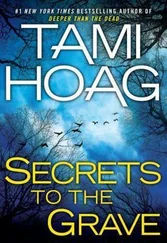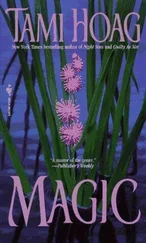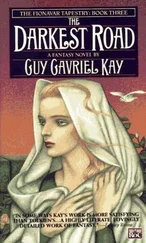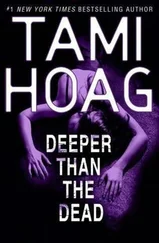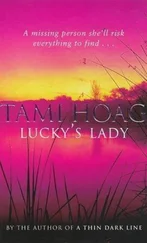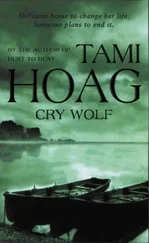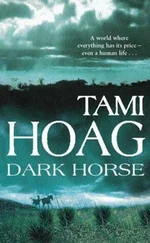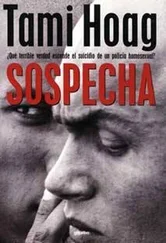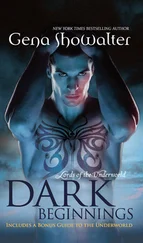
Also by Tami Hoag
Secrets to the Grave
Deeper Than the Dead
The Alibi Man
Prior Bad Acts
Kill the Messenger
Dark Horse
Dust to Dust
Ashes to Ashes
A Thin Dark Line
Guilty as Sin
Night Sins
Dark Paradise
Cry Wolf
Still Waters
Lucky’s Lady
Sarah’s Sin
Magic
To the survivors.
Resources to help or support victims and survivors of crime:
The National Center for Victims of Crime
www.ncvc.org
National Organization of Parents Of Murdered Children
www.pomc.com
National Center for Missing & Exploited Children
www.missingkids.com
AUTHOR’S NOTE
In 1990 George H. W. Bush was president of the United States. That year was considered the last of the Cold War era and the year of the first Gulf War. East and West Germany had yet to reunite. Driving Miss Daisy won the Academy Award for Best Picture.
In 1990 the World Wide Web was still two years away. Widespread public access to e-mail was still a thing of the future. Tweeting was something that came from birds. Facebook cocreator Mark Zuckerberg was barely out of kindergarten. Cell phones were still considered more novelty than necessity.
In the area of forensic science, DNA analysis was becoming more sophisticated but was still light-years behind the technology available to us today. Today, minuscule samples of genetic material can yield the DNA profile of a perpetrator or a victim due to our ability to amplify samples in the lab. In 1990, testing a small sample meant running the risk of the destruction of the sample without guarantee of results.
In 1990 the FBI’s Violent Criminal Apprehension Program (ViCAP), originally created to gather data on transient serial killers who crossed jurisdictional lines, had just begun to expand its scope to include kidnappings and sexual assaults, but was still accessible at that time only to FBI personnel. ViCAP is now available to all law enforcement agencies across the country, making the process of connecting the dots between the crimes of serial offenders much faster.
When I sat down to write Deeper Than the Dead several years ago, I had no real intention of writing an ongoing series that would follow the advances in modern technology and forensic sciences from 1985 on. Queen of the Short Attention Span, I’m usually ready to move on from characters by the time I finish a project. As for technology, I can barely set the DVR. Yet Down the Darkest Road is number three for the characters of Oak Knoll, California. They’ve become old friends to me. Old friends I want to continue to visit—at least until they have cell phones and can “friend” me on Facebook.
1
Once upon a time I had the perfect family. I had the perfect husband: handsome, loving, successful. I had the perfect children: Leslie and Leah—beautiful, brilliant, precious girls. I had the perfect life in the perfect home, in the perfect place. We were one of those sickeningly perfect families with matching monograms. The Lawtons: Lance, Lauren, Leslie, and Leah. The Lawtons of Santa Barbara, California.
And then, as in all fairy tales, evil came into our lives and destroyed us.
I remember when Leslie was small and loved to have us read to her. Fairy tales were the obvious choice. Our parents had read fairy tales to us when we were children. I remembered the books as being filled with beautiful pictures and happy endings. But fairy tales aren’t happy stories. Only from a distance are they beautiful. In reality they are dark tales of abuse, neglect, violence, and murder.
Cinderella is held as a prisoner and treated as a slave in her own family home, abandoned by the death of her father to the physical and psychological torment of her stepmother and stepsisters.
Hansel and Gretel are abducted by a sadistic maniac who holds them captive in the woods, fattening them with the intent of roasting them alive and cannibalizing them.
Red Riding Hood goes into the forest to visit her elderly grandmother only to find the woman has been savaged and eaten alive by a wild animal.
These are fairy tales.
So is my story.
Leslie was—is—our firstborn. Headstrong and charming, a little rebellious. She loved to dance, she loved music.
Loves music.
Who would ever think a person could be tormented by the choice of verb tense? Past? Present? A choice of little consequence to most people, that choice can bring me to tears, to the point of collapse, to the brink of suicide.
Leslie was. Leslie is. The difference to me is literally one of life or death.
Leslie is alive.
Leslie was my daughter.
My daughter went missing May 28, 1986. Four years have passed. She has not been seen or heard from. I don’t know if she is alive or dead, if she is or was.
If I settle on the past tense, I admit my child is gone forever. If I grasp on to the present tense, I subject myself to the endless torment of hope.
I live in limbo. It’s not a pleasant neighborhood. I would give anything to move out, or at least to remove the pall of it from my soul.
I crave some kind of cleansing, some kind of catharsis, an elimination of the toxic waste left behind in the wake of a bad experience. The idea of catharsis sparked me to begin this book. The idea—that by sharing my experience with the world, the poison of these memories might somehow be diluted—was like throwing a lifeline to someone being swept away by the raging waters of a flood.
The catch, however, is that I can’t escape the torrent no matter how strong that lifeline might be. I am the mother of a missing child.

Writing just that much had exhausted Lauren. It had taken six hours to finish three pages, feeling as if she had to pluck and pull each word from the thick black tar of her emotions. She felt as if she had run a marathon and now needed to strip off her sweaty clothes and shower off the road grime. She saved her work, such as it was, to a floppy disk and shut down the computer.
She and her younger daughter, Leah, had moved to Oak Knoll more than a month past. It had taken her that long to stop procrastinating and sit down in front of the computer. And still a part of her had risen up in panic, screaming that it was too soon, that she wasn’t ready. Every day of her life was a constant struggle within herself between the need to move forward and the fear of it, between sympathy for herself and disgust at her need for it.
The whole idea of this move was to retreat from the scene of all crimes in order to gain distance both literally and figuratively. And with distance perhaps would come some kind of perspective. She had the same hope for writing about what had happened: that through the telling of her story she would gain some kind of perspective and, if not peace, some kind of—what? Calm? Quiet? Acceptance? None of those words really fit. They all seemed too much to hope for.
Bump and Sissy Bristol—old friends from Santa Barbara—had embraced her idea—both of the book and of the change of venue—and had offered the use of their second home in Oak Knoll as a refuge.
Читать дальше



